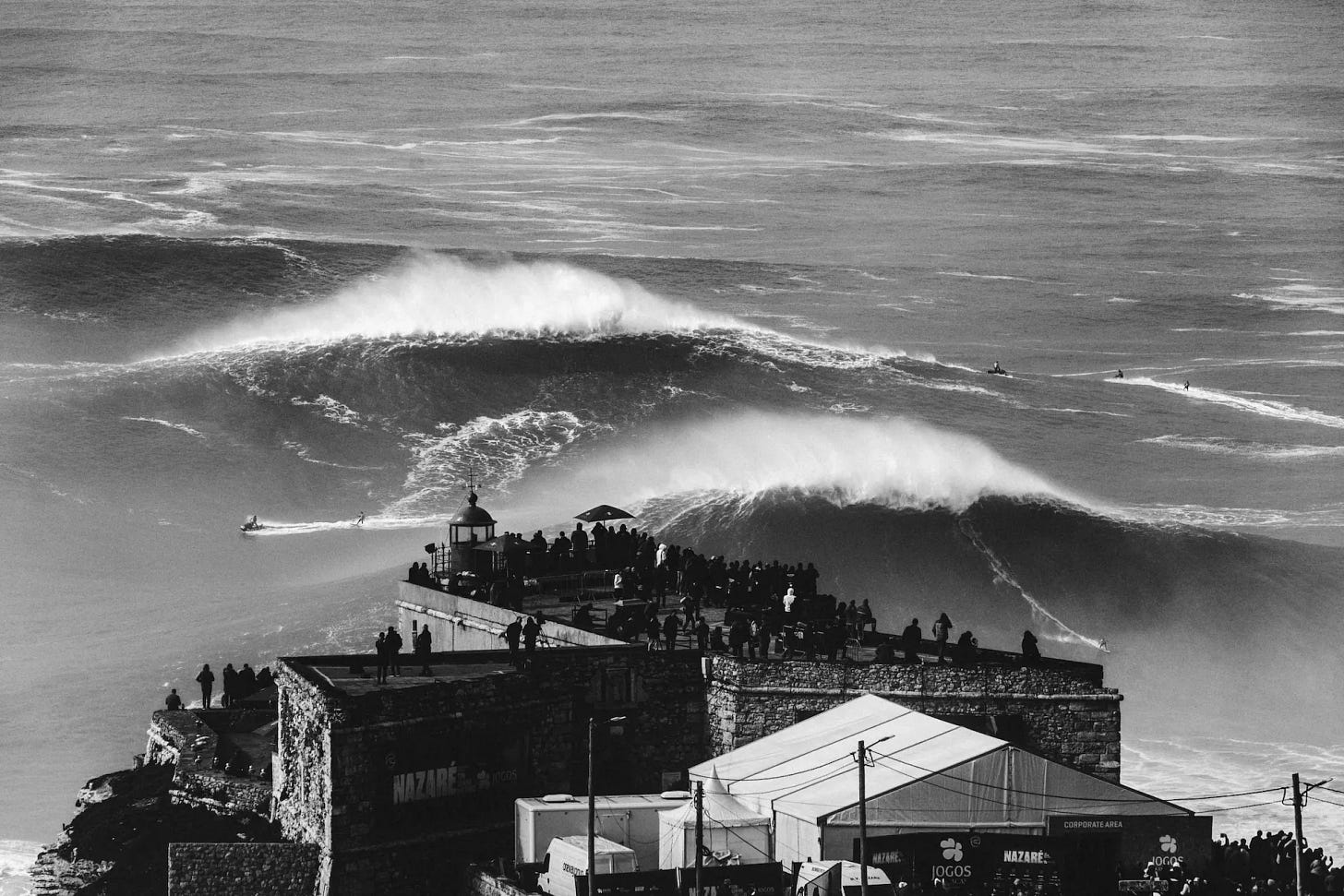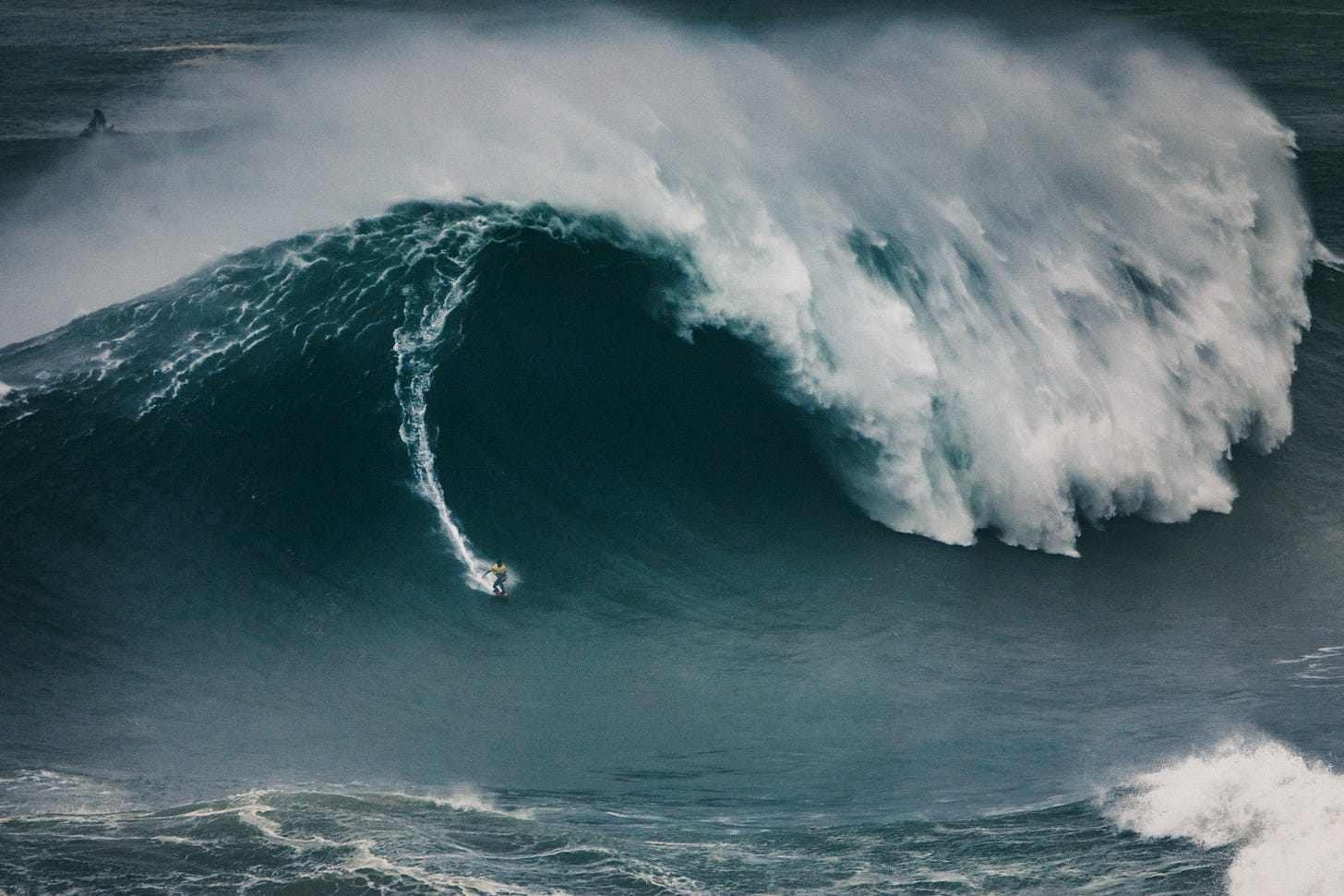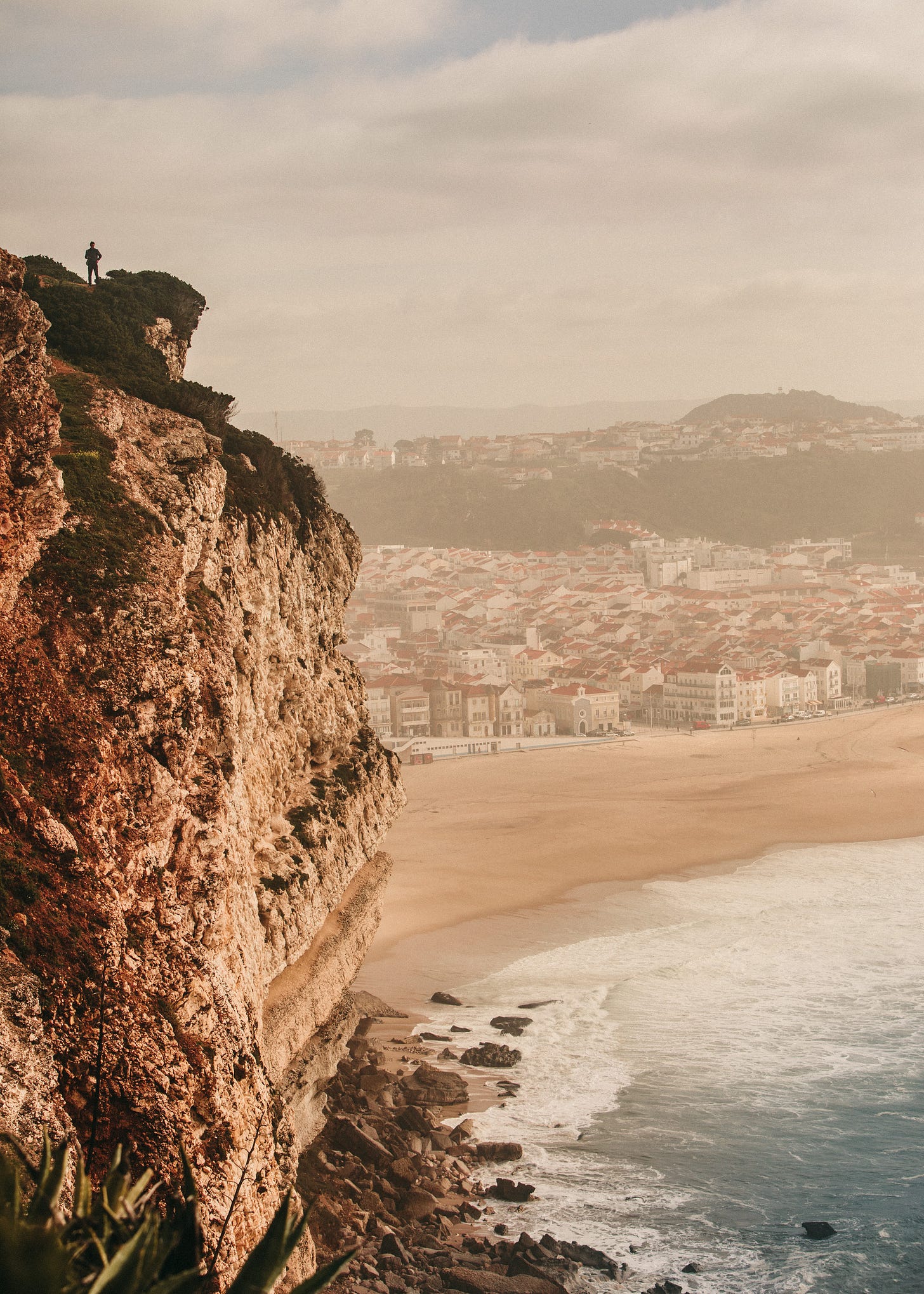Tuesday Spot Check: Nazare
Part tourism project, part big wave experiment, part clown factory, Nazare has taken surfing into a new realm.

“There’s such a weird mix of surfers that tow Nazare compared to any other big wave spot,” Andrew “Cottie” Cotton, told the Surf Bugle. “From base jumpers to Brazilians, from Russian learners to elite pros and underground nutters. It’s not surprising though. Nazare is, and always has been, a tourism project.” Cotton could have added amputees, blind surfers, midgets, violin players, bodysurfers, unhinged kooks, hinged OG’s, models, influencers, and chimpanzees. And I only made the last one up. (Click here for a previous article on Shane Dorian and Cottie paddling Nazare, and me helping Andrew only in my underpants)
I remember talking to Northern Beaches Matt Grainger a few years ago, after he’d had his first crack at 60-foot (ish)Nazare. “My brain was fried, my hard drive was full and I had to go back to the harbour,” he said. “On the way back on the ski I saw Laird Hamilton stopped on his ski. He said, ‘I’ve run out of fuel. The warning light has been on for the last two hours, but I was having too much fun.’ So I did a bow line and towed him back to the harbour.”
Apart from the rope, there was little else connecting Grainger with Hamilton. Grainger runs a surf school out of Sydney’s Northern Beaches and is known locally for towing and padding Sydney’s biggest waves. Laird, of course, is Laird.
Very amateur footage by me in the Nazare channel
But Nazare attracts a huge range of disparate surfers and hucks them in the big-wave petri dish that is an old Portuguese fishing town and the world’s tallest waves. Cottie however was one of the first surfers to commit to surfing Nazare after Garrett McNamara. Nazaré had been surfed since the early 1960s, but never when the waves were huge.
Nic Von Rupp recalls travelling to the break as a 14-year-old in 2005 with Ross Clarke-Jones and Manoa Drollet. “They were recognized as the best big wave surfers in the world and there they were in front of the biggest wave of the world unarmed,” he posted a while ago. “I remember watching Ross walking around looking at the waves from all different angles trying to make sense of it all.”
Around that time local bodyboarder Dino Casimiro sent Garrett an email with pictures of Nazare. Casimiro knew the waves were huge, having watched them all his life, but without any human to put a scale to it, didn’t know just how truly big they were. He figured Garrett might be that human.
Garrett eventually arrived in 2011 and in those early days, he would surf solo as his wife Nicole spotted for him alone from the disused fort. “When we first arrived we found the locals weren’t that friendly,” said Nicole, “but it was only after we’d been there a few winters we found out why. They initially didn’t want to get too close to Garrett as they were convinced he was going to die.”
Garrett survived of course and word soon started getting out of his exploits. McNamara was first joined by a small group of fellow big wave enthusiasts including the UK’s Cottie and Tom Butler, Germany’s Sebastian Steudtner and local fisherman Hugo Vao. That first winter McNamara was towed into a wave that was later to be judged 78 feet high - a new world record.
Yet despite those waves and increased mainstream coverage, the wave lacked credibility in the surfing world. Fast forward to this month when Stuednter got worldwide coverage for a wave he’d measured with Porche engineers at 93 feet, considered to be a new world record.
“In 2014 my wave at Nazare was beaten for the XXL Biggest Wave Award by a wave a fraction of the size at Belharra,” said Cottie. “As it was mainstream before it was core, surfers thought it wasn’t legit, calling it an optical illusion and all that crap. So it’s taken time, but what is forgotten is that Garrett was paddling it from the start and paddling it big.”
From the start, Garrett was also getting paid by the Nazare City Hall to promote the town. The mayor Walter Chicharro, with incredible foresight, saw the potential in those giant pyramids that broke so close to the shore. He has seen the transformation of the fort, which was closed to the public for centuries, into a big wave surfing museum and backed all the WSL events. Such has been the impact in 2017 McNamara became the only foreigner to receive the Vasco de Gama Medal of Honour from the Portuguese Navy for his contribution to Portugal.
“The city hall built a gym, a pool and a high-performance sports centre on the beach and all the facilities are free,” says Cottie. “They treat us like serious athletes and provide the infrastructure so that we can make content and attract people to the town.”
It’s worked. On the night after the Nazare Tow Challenge I shared dinner at the big wave hangout and Restaurant Celeste with an aspiring pop star from Brooklyn, a non-surfing couple from Birmingham, a retired Navy officer from New Zealand and a Polish doctor who all had achieved a lifelong goal of seeing the giant waves with their own eyes. They were, in their own words, “massive Nazare fans.”
In that regard, they weren’t too different from Hawaiian legend Ian Walsh. The Jaws pioneer was initially reluctant to surf the wave, given the season overlapped with Hawaii’s. A few years ago, with prompting from Kai Lenny and Lucas Chianca he made his first trip.
“Culturally the town and the surfers are so supportive. My eyes have also been opened to safety and especially how important the role of driving is.” Walsh told me. “Add the incredible speed you travel which will change my equipment for sure. There is the consistency; the waves didn’t get under 50-foot for a week, and the geography, where there is flat water and a safe harbour minutes from these giant waves. I can now see why this is the place where major advancements in tow surfing are happening so rapidly. I tell you what though, when I got back and surfed Jaws I had a newfound love for that channel.”
In the end, that might be Nazare’s greatest mystery. How waves that big can be ridden at a beachbreak when the inside is such a minefield. The near-death-experiences of Maya Gabeira in 2014 and Alex Botelho (which I had to commentate live on) in the 2020 event showed just how dangerous it can be. In Jan 2023 Brazilian big wave surfer Marco Freire was the first surfer to die at the wave. Despite the commitment to safety and the advancements in tow surfing generally, this is a wave more dangerous than any other on the planet.
“Alex’s incident showed everything is okay at Nazare, till it’s not,” says Cottie. “Every season gets busier though and this strange, big-wave experiment isn’t over. However, at the end of the day, you got to pay to play. That will never change at Nazare.”






